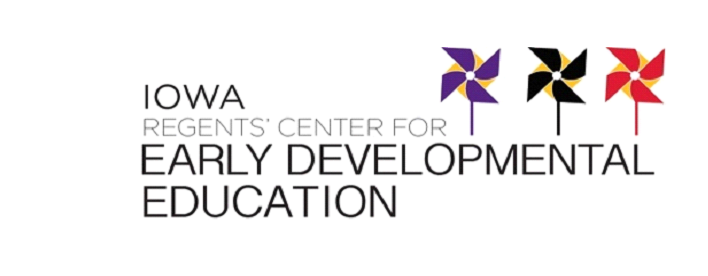A game that builds memory and reasoning skills.
NAEYC
Curriculum: Essential Characteristics
2.A.08— Materials and equipment used to implement the curriculum: reflect the lives of the children and families…and… promote…interaction;
A student teacher, Jennifer, introduces Ms. Schaffer’s class to a memory game. The game involves one person closing their eyes while the other hides one of five farm animals, then waits for the other person to guess which animal is missing.
Curriculum: Essential Characteristics
2.A.10— The curriculum guides teachers to incorporate content, concepts, and activities that foster social, emotional, physical, language, and cognitive development and that integrate key areas of content including…science…and social studies.
The “Which One is Missing?” game encourages children to use the process of elimination to determine which of the farm animals has been taken from the tray.
Curriculum Content Areas for Cognitive Development: Science
2.G.06— Children in Ms. Schaffer’s class are provided varied opportunities and materials that encourage them to think, question, and reason…
When children play “Which One is Missing?” they have opportunities to form mental before and after pictures in order to determine which animal is missing from the tray.
IELS
7.2-Play and Senses
Children engage in play to learn.
Children in Ms. Schaffer's class use sights...to discriminate between, explore, and experience activities and materials.
Jennifer, a student teacher plays a game with a boy in Ms. Schaffer's class. She has a tray with five different animal figures in it. She asks the boy to close his eyes while she takes one away. After opening his eyes, the boy is asked to figure out which animal is missing.
8.3-Problem Solving
Children demonstrate strategies for reasoning and problem solving.
The children in Ms. Schaffer's class show interest in and finds a variety of solutions to questions, tasks, or problems.
Boys play a game in Ms. Schaffer's class where they must determine which animal in a series is missing. The boys points out the space where the animal was, and use that information to help them remember which animal was there.
11.5-Scientific Problem Solving
Children apply and adapt strategies to solve problems.
Children in Ms. Schaffer's class use their senses and variety of strategies to solve problems.
Jennifer, a student teacher, introduces Ms. Schaffer's class to a game called "Which One is Missing?". The children playing the game use their sense of sight to study the position of animal figures in a tray. They are asked to close their eyes while one animal is taken away. Some children simply recall which animal is no longer there while others use the position the animal was in to remember which one has been taken away.
IQPPS
Curriculum: Essential Characteristics
2.8— Materials and equipment used to implement the curriculum: reflect the lives of the children and families…and… promote…interaction;
A student teacher, Jennifer, introduces Ms. Schaffer’s class to a memory game. The game involves one person closing their eyes while the other hides one of five farm animals, then waits for the other person to guess which animal is missing.
Curriculum: Essential Characteristics
2.9— The curriculum guides teachers to incorporate content, concepts, and activities that foster social, emotional, physical, language, and cognitive development and that integrate key areas of content including…science…and social studies.
The “Which One is Missing?” game encourages children to use the process of elimination to determine which of the farm animals has been taken from the tray.
Curriculum Content Areas for Cognitive Development: Science
2.28— Children in Ms. Schaffer’s class are provided varied opportunities and materials that encourage them to think, question, and reason…
When children play “Which One is Missing?” they have opportunities to form mental before and after pictures in order to determine which animal is missing from the tray.
HSPS
1304.21(c)(1)(ii) – Ms. Schaffer provides for the development of cognitive skills by encouraging each child to organize his or her experiences…develop age appropriate…reasoning, problem solving and decision-making skills which form a foundation for school readiness and later school success.
Jennifer, a student teacher, introduces Ms. Schaefer's class to a game called "Which One is Missing?". The children playing the game study the position of animal figures in a tray. They are asked to close their eyes while one animal is taken away. Some children simply recall which animal is no longer there while others use the position the animal was in to remember which one has been taken away.
1304.21(c)(1)(vi) – The student teacher in Ms. Schaffer’s classroom provides each child with opportunities for success to help develop feelings of competence, self-esteem, and positive attitudes toward learning.
While the student teacher is playing a memory game with a student in Ms. Schaefer’s class she is enthusiastic and encouraging each time the student chooses the correct animal. This in turn allows the student to feel competent and establish positive attitudes toward learning. When two students play the game together Ms. Schaefer comments on how long and hard one of the students thought about the correct answer which encourages the development of feelings of competence and self esteem.
HSCOF
Science
Scientific Skills and Methods
- Begins to use senses and a variety of tools and simple measuring devices to gather information, investigate materials and observe processes and relationships.
- Develops increased ability to observe and discuss common properties, differences and comparisons among objects and materials.
Scientific Knowledge
- Develops growing awareness of ideas and language related to attributes of time and temperature.
Approaches to Learning
Initiative and Curiosity
- Develops increased ability to make independent choices
Engagement and Persistence
- Shows growing capacity to maintain concentration over time on a task, question, set of directions or interactions, despite distractions and interruptions.
Reasoning and Problem Solving
- In recognizing and solving problems through active exploration, including trial and error, and interaction and discussions with peers and adults

